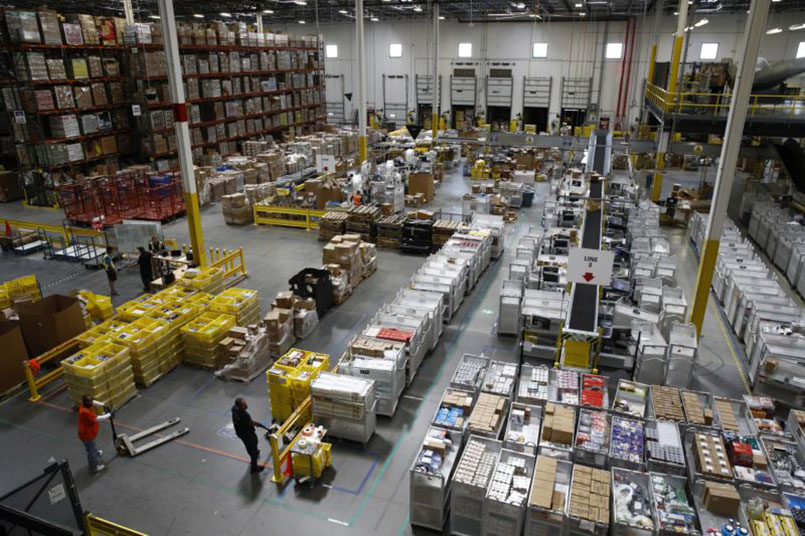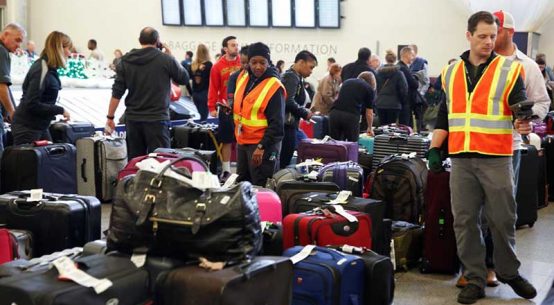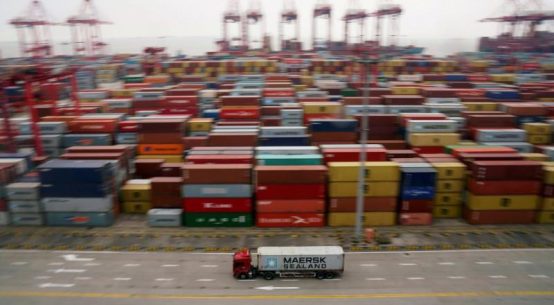
With first-quarter volume figures coming in for many airports around the world, we noticed two, in particular, stood out from the crowd: Leipzig Halle Airport (LEJ) in Eastern Germany, and Cincinnati/Northern Kentucky Airport (CVG) in the United States.
Both of these mid-sized airports reported volumes up – way up – in Q1, reaching 12.3 percent and 34.1 percent year-over-year growth, respectively, outpacing the more modest, but still robust, growth seen at many other airports. What do they have in common? They’re both major hubs for DHL Express, while CVG also handles a large volume of Amazon’s traffic, as well.
Q1 analysis below from David Harris, senior editor of Cargo Facts show the widening gap between the growth rates of e-commerce-driven express and general cargo volume.

E-commerce & express drive airport cargo growth
In Europe, the gulf between express and general cargo continues to widen. Cargo volume growth at Europe’s major cargo airports was less than stellar in the first quarter of 2018, with March being particularly weak.
To some extent, this reflects the lackluster performance of the major cargo airlines with hubs at these airports:
- Lufthansa reported its cargo volume up just 0.4% y-o-y in March and 4.9% for the quarter, while Frankfurt (FRA), Lufthansa’s main hub, saw its handle decline 1.7% in March and increase just 0.7% for the quarter.
- Air France-KLM continued to report dismal cargo numbers, with traffic down 1.7% and 0.4% for the month and quarter. This was reflected at Amsterdam Schiphol (AMS), KLM’s hub, as cargo volume fell 4.8% in March and 2.1% in the quarter.
- March cargo traffic at IAG, parent of British Airways, was down 0.5% in March and down 0.7% in the first quarter. London Heathrow (LHR), BA’s main hub, fared a bit better, but still only reported its cargo handle up 1.5% and 4.3% for the month and quarter, respectively.
But turn now to Leipzig Halle Airport (LEJ) in Eastern Germany, and the story is different. DHL Express’ main hub reported its March cargo handle up 8.5% to an all-time record 107,000 tonnes, while volume for the first quarter jumped 12.3% to 299,000 tonnes. DHL has not yet published its 1Q18 financial and operational data, but we expect to see the company’s parcel volumes growing at a rate significantly higher than that of the cargo traffic at the big general cargo carriers.

Looking at the Americas, the big carriers fared much better than their European counterparts, with traffic growth at LATAM, Delta, and United averaging close to double digits for the month and the quarter. Traffic at the major American airports likely reflects the solid growth in air freight demand reported by the region’s airlines, but consider Cincinnati/Northern Kentucky Airport (CVG), an otherwise small regional airport that has the distinction of hosting DHL’s US air operations, as well as a significant share of Amazon’s air volume.
And its cargo handle? Up 34.1% y-o-y in March to 105,000 tonnes. Almost all of which (over 99%) is express.
Of course, like just about everything, all of the above comes with a caveat. In Europe, volume growth at DHL Express is outstripping air freight demand growth at the big general cargo carriers, but while DHL’s US volume (and that of Amazon) is growing rapidly, the country’s two Express giants – FedEx and UPS – are lagging the country’s major airlines when it comes to cargo growth.
- From reports by ACW and Cargo Facts
.









